1. Big Boxy Televisions
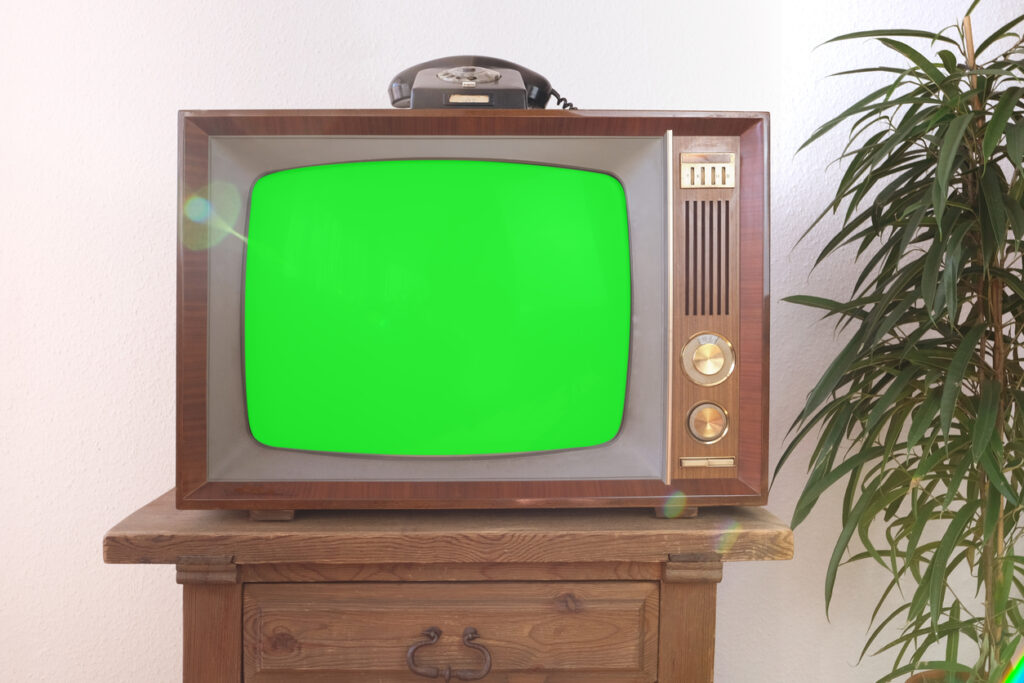
If the 1970s were about shag and earth tones, the 1980s turned living rooms into stages for electronics, bold colors, and style. At the heart of it all sat the big boxy television, often framed in wood, heavy enough to feel like furniture. Families circled couches around it, creating the modern hearth. Remote controls finally freed people from standing up to change channels, but choices were still limited. Saturday mornings meant cartoons, evenings were spent with sitcoms, and late nights offered variety shows. The television anchored the family space, setting the tone for everything else in the room.
2. VHS Players and Tapes
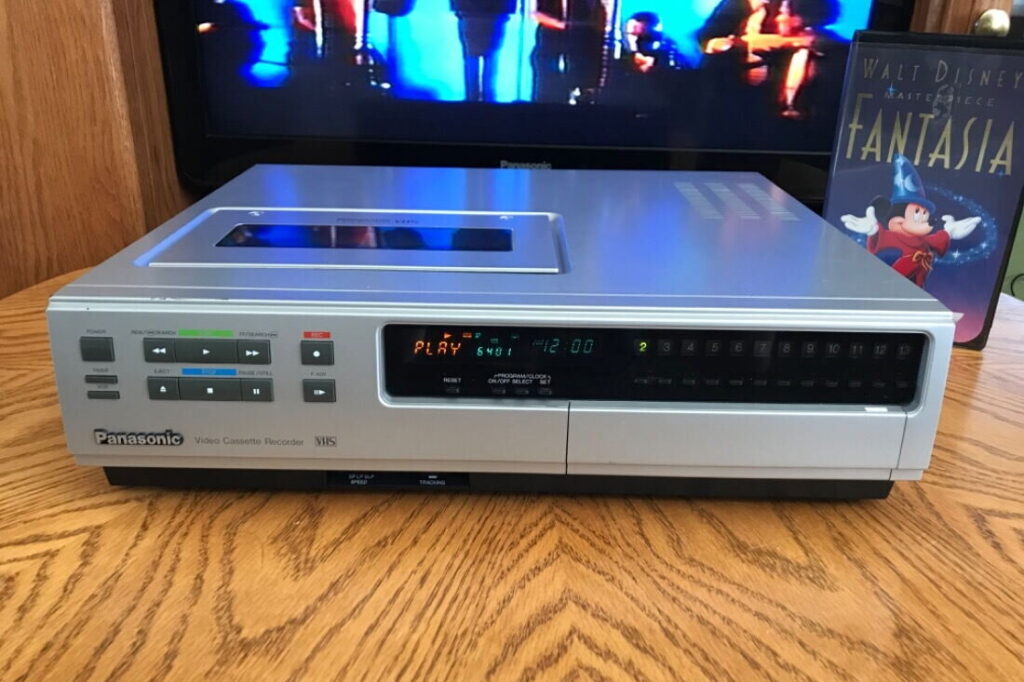
Right beside the television came the VHS player, an invention that forever changed the rhythm of family nights. Families rented tapes, recorded soap operas, and stacked shelves with bulky cases that looked impressive but consumed space. Children waited impatiently for tapes to rewind while parents scolded them to handle cassettes carefully. The phrase “Be Kind, Rewind” was everywhere, printed on store reminders and tape stickers. VHS tapes transformed living rooms into theaters, with weekend movie nights becoming rituals. Suddenly, entertainment was no longer scheduled by television networks. It was in the hands of anyone who had a tape to play.
3. Nintendo Entertainment System
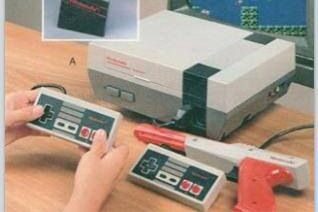
For kids of the decade, the Nintendo Entertainment System was more than a toy. It was the gateway to afternoons filled with Super Mario Bros. and Duck Hunt, with controllers stretched across the carpet and cords ready to trip anyone walking by. The gray box under the TV held cartridges that sometimes needed a magical blow to work. Parents frowned at hours spent playing, but secretly enjoyed a round themselves. The living room became an arcade without quarters. The NES was the piece of technology that made gaming a family affair and cemented its place in household culture.
4. Glass Coffee Tables
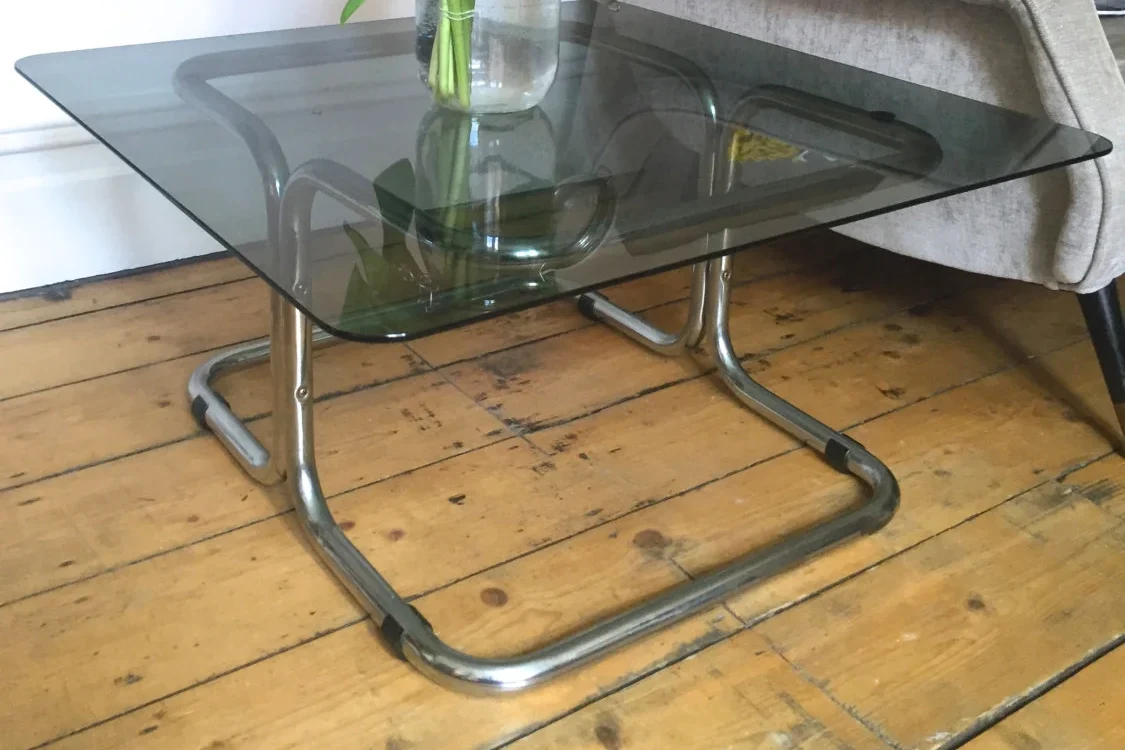
Once the television and consoles were set, all eyes went to the glass coffee table. These tables shined with brass or chrome frames, looking sleek but hardly practical. Children bumped knees on corners and parents polished constantly to clear smudges. Yet they held everything: stacks of magazines, remote controls, candy dishes, and decorative bowls of potpourri. Guests were often greeted by displays placed carefully on these fragile tables. Despite their delicacy, they were symbols of sophistication in a decade that thrived on shine. Glass coffee tables defined the look of many living rooms, reflecting both light and social expectations.
5. Pastel or Neon Artwork
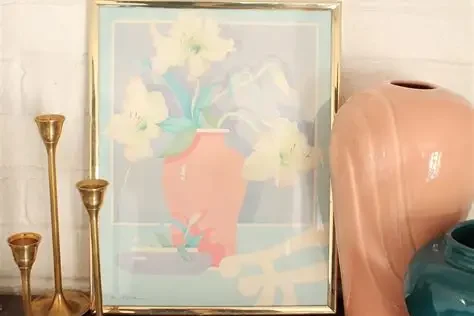
The walls of 1980s living rooms rarely looked bare. Instead, they were canvases of pastel artwork, beach scenes, flamingos, or bold abstract prints. Sometimes neon accents made their way indoors, glowing with a nightlife feel. The art carried colors of pink, blue, and lavender, radiating optimism and flair. Families hung framed prints not just for beauty but for fashion, because homes needed personality as loud as the clothes of the decade. Pastel and neon art reminded guests that décor was just as important as furniture. In these rooms, every wall had something to say about the times.
6. Floral or Chintz Sofas
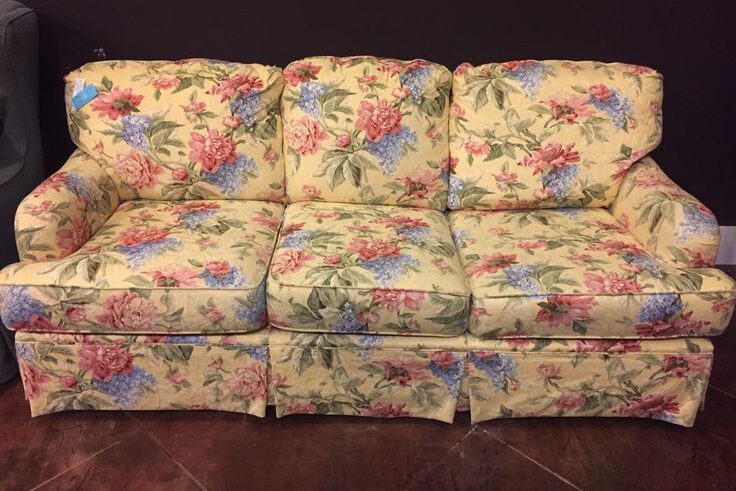
The sofa was often the softest yet busiest part of the room. Covered in floral chintz fabric, it looked cheerful at first glance but showed wear quickly. Some homes paired these with equally patterned armchairs, filling rooms with color and movement. Others preferred leather for a sleek executive feel, but floral dominated suburban living. Families gathered here to watch television or nap, while kids tested the strength of cushions during play. Sofas weren’t just furniture, they were canvases of fabric and memory, worn into comfort over years. The floral sofa remains a loud reminder of the era’s decorative choices.
7. Entertainment Centers
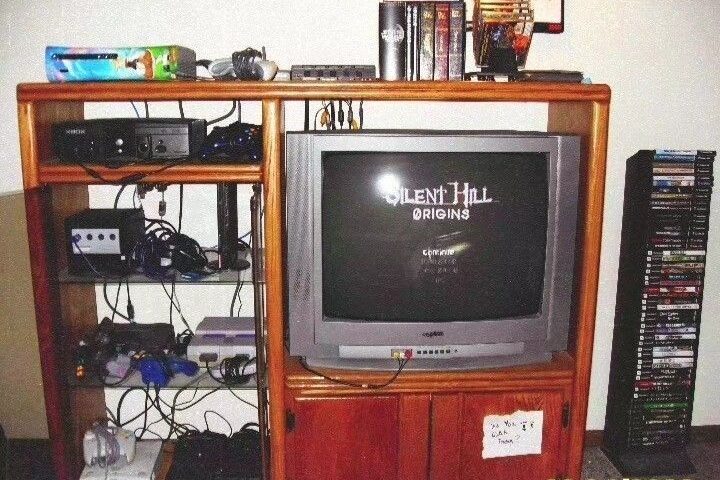
The entertainment center was the command station of the 1980s living room. Tall and wide, made of heavy wood, it housed the television, VCR, stereo system, and sometimes glass cabinets for family heirlooms or trinkets. These units became unavoidable, dominating entire walls and requiring constant dusting. Families stacked tapes in cubbies, placed framed photos on shelves, and treated it like the centerpiece of the household. Children knew to tread carefully around it. The entertainment center gave technology a throne while turning the living room into a hub of everything modern, capturing both the clutter and pride of the decade.
8. Remote Control Holders
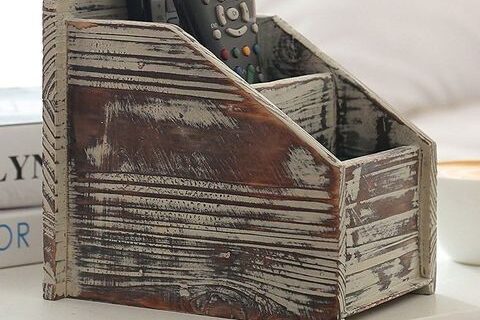
As remotes multiplied with televisions, VCRs, and stereos, losing them became a household crisis. Some families introduced small wooden caddies or fabric organizers, designed to corral these prized possessions. Despite good intentions, remotes still slipped between couch cushions, sparking playful arguments or full searches across the living room. Children claimed victory when they found one under a sofa flap. The holder was less about utility and more about showing order in a room brimming with gadgets. It represented a household trying to tame its growing collection of electronics while highlighting the importance of convenience in everyday family life.
9. Cordless Phones with Long Antennas
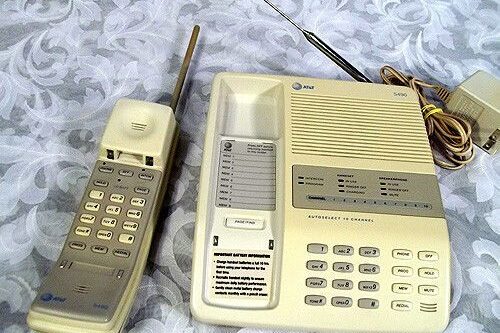
Nothing screamed freedom like pacing around the living room with a cordless phone, antenna stretched tall. Finally, family members could wander without being tethered to the wall. Static often broke conversations, batteries drained fast, and interruptions were common, but the thrill of mobility outweighed inconveniences. Teenagers loved retreating to corners for privacy while parents laughed at the comically long antennas. Phones became more than functional, they became accessories for chatting while tidying or lounging on floral sofas. Cordless phones were imperfect yet groundbreaking, a device that showed technology was beginning to give everyday life small bursts of independence.
10. Big Stereo Systems
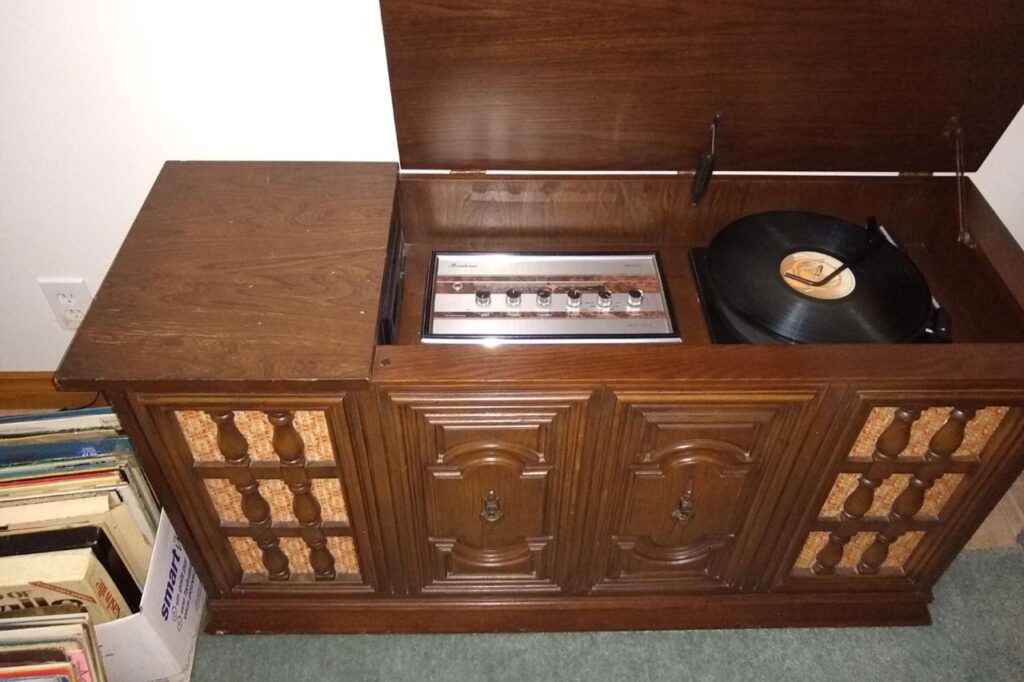
Music lovers of the 1980s boasted about their stereo systems, proudly stacked with tape decks, equalizers, amplifiers, and oversized speakers. These towering setups looked like recording studio equipment but filled living rooms with booming sound. Bass shook walls during parties while soft rock carried family dinners. Friends compared wattage like bragging rights, and record collections sat nearby, ready for the next song. These stereos weren’t just for music, they were statements of style and taste. The bigger and louder, the better. Stereo systems turned the living room into both a dance floor and an acoustic arena for the family.
11. Wall-to-Wall Carpeting
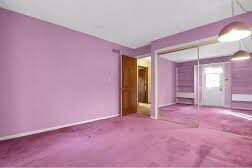
Underneath all the electronics and furniture lay thick wall-to-wall carpeting. Shag had mostly faded out, but plush beige and gray carpets covered most homes. They felt warm and soft underfoot, but stains clung stubbornly. Families invested in vacuum cleaners and miracle stain removers, hoping to keep them fresh. Kids sprawled out during television time, building forts or simply lying across the floor. Carpeting absorbed both sound and life, muffling the clatter of games and the thump of recliners. It was a foundation of comfort, even if it rarely stayed pristine, shaping the sensory memory of the decade’s living rooms.
12. Track Lighting
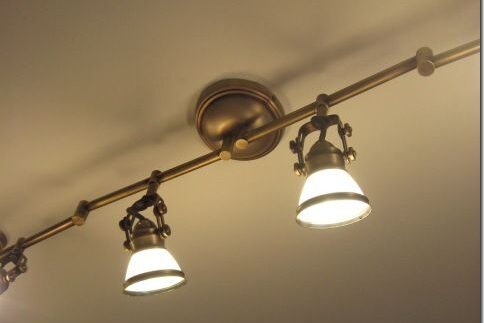
Ceilings of the 1980s often held track lighting, with shiny rails and movable spotlights. They aimed at art, furniture, or sometimes just random corners, creating futuristic vibes that weren’t always flattering. Families loved showing them off to guests, twisting lights to highlight pastel prints or glossy cabinets. While shadows often fell oddly, the presence of track lighting declared a room modern and up to date. It was a small but telling design choice, making a living room look sophisticated. Track lighting was a product of its time, adding shine while showing how homes embraced the spirit of modernity.
13. Leather Recliners
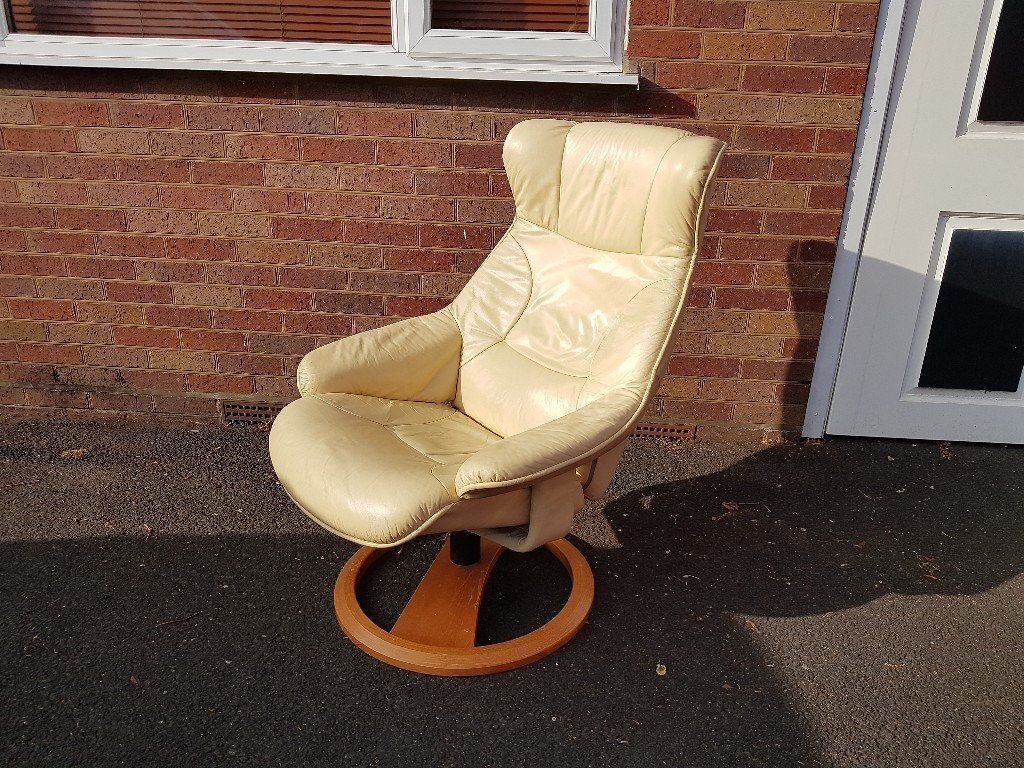
The leather recliner was often the throne of the house, claimed quickly by dads after work. Oversized, with pull-out footrests and sometimes cup holders, these chairs radiated comfort. Children often climbed in anyway, sparking squabbles over who controlled the prized seat. Some recliners squeaked when leaned back, but no one cared. They symbolized relaxation and indulgence in a decade that loved both. Recliners became family landmarks, serving as napping spots, television chairs, and reading corners. They were never just chairs, they were personal spaces that carried the personality of whoever sat in them the most throughout the week.
14. Glass-Front Curio Cabinets
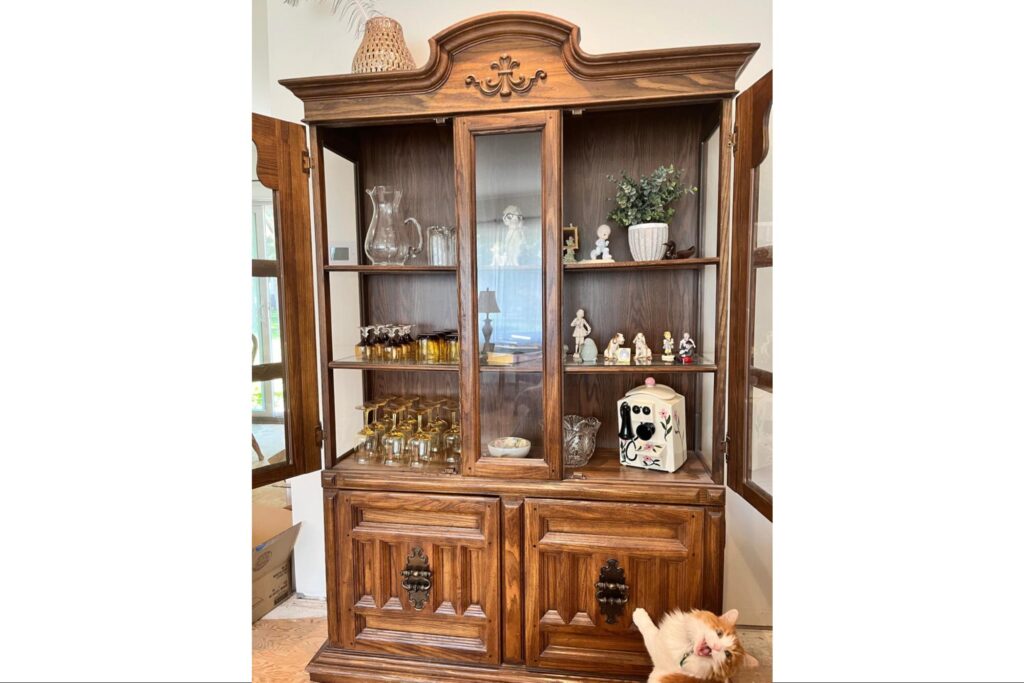
Another common sight was the curio cabinet, standing tall with glass doors that revealed delicate treasures. Figurines, crystalware, and collectible plates filled their shelves, often arranged with pride. For kids, they were forbidden zones of “look but don’t touch,” while parents saw them as a mark of taste. Guests admired them during visits, nodding at the careful displays. Curio cabinets were about more than storage, they were showcases of identity. They told stories through porcelain dolls, crystal bowls, or framed family keepsakes. In the 1980s, the curio cabinet wasn’t just furniture, it was a carefully guarded family museum.
15. Fake Flowers and Potpourri Bowls

Décor in the 1980s often included vases filled with fake flowers and coffee tables topped with bowls of potpourri. At first, they brightened up a space with pleasant smells and colorful displays, but over time they gathered dust. Children avoided knocking over vases, while guests politely commented on the scents, sometimes too strong. Despite imperfections, these touches reflected the desire to make rooms inviting. Potpourri and fake flowers weren’t practical, but they felt necessary. They added warmth to gatherings and offered the sense of a home trying to be elegant. They became small but memorable tokens of the decade.
16. Brass and Glass Décor
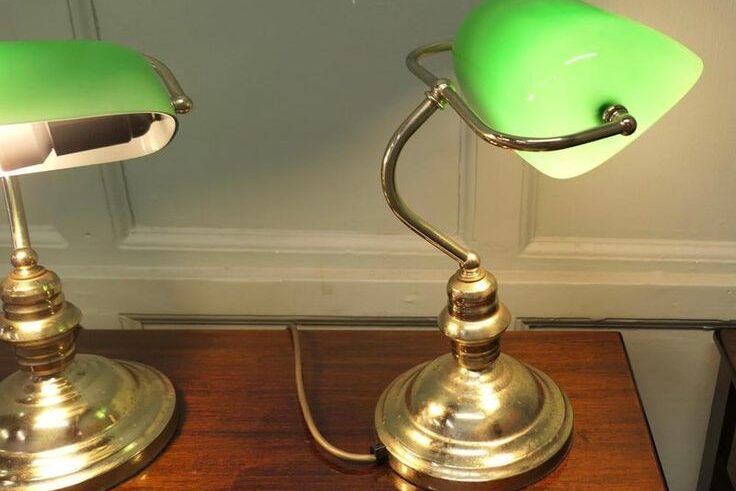
Few combinations defined the 1980s like brass and glass. From lamps to mirrors to shelving, shiny brass trim paired with clear surfaces became instantly recognizable. The look felt futuristic and sleek, even though brass tarnished easily and needed constant cleaning. Families proudly displayed brass-framed mirrors or tables that caught the light in ways other materials never could. Though not always practical, brass and glass symbolized the desire for sparkle in everyday life. Décor of the era leaned into shimmer and gloss, and this pairing became one of its loudest statements, present in countless living rooms across the country.
17. Pop Art and Poster Prints
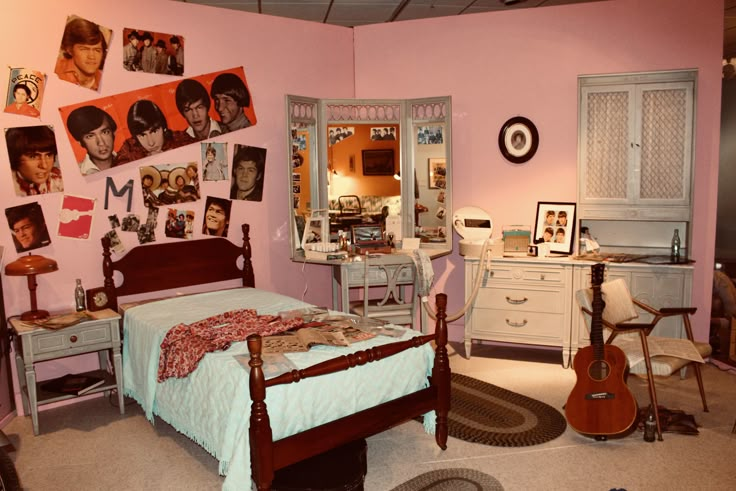
Walls in the 1980s loved to show off poster prints, from pop art to skylines to rock bands. Large framed pieces gave homes an artistic but accessible flair. Families hung portraits of celebrities or stylized city scenes, blurring the line between teenager taste and adult décor. Pop art especially, with its bright shapes and bold outlines, added playful touches to even the most formal spaces. These prints didn’t have to be expensive to feel significant. They reflected consumer culture and youthful energy, making living rooms vibrant. Poster prints showed how art could move from galleries to the heart of homes.
18. Reclining Sectional Sofas
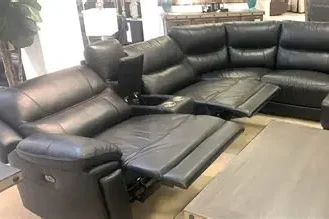
Beyond the single recliner sat the sectional sofa, a true giant of the 1980s. Wrapped around entire rooms, these couches sometimes came with built-in recliners and cup holders. Families sprawled across them for movie marathons or crowded together during parties. Covered in velour or corduroy, they were plush, cozy, and unapologetically massive. Children turned the sections into obstacle courses, while parents enjoyed the extra seating for guests. These sofas were more than furniture, they were gathering points. They embodied the decade’s emphasis on comfort and togetherness, even if they took up more space than many rooms could gracefully handle.
19. Crystal Candy Dishes
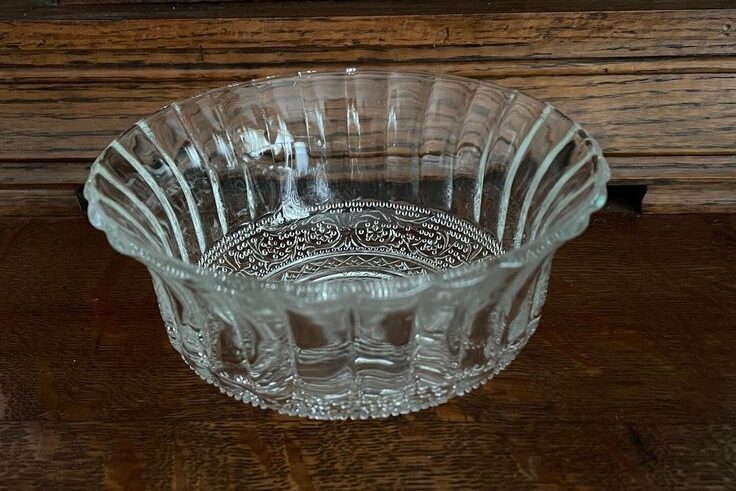
Sitting proudly on coffee tables, crystal candy dishes were tiny but memorable icons. They gleamed in sunlight, filled with brightly wrapped sweets that tempted guests. Sometimes the candy sat too long and turned sticky, but that didn’t stop anyone from sneaking a piece. These dishes were more than décor, they were gestures of hospitality. Families displayed them as if they were as important as artwork. Children lifted lids quietly, hoping no one noticed. Crystal dishes were elegant without being too formal, making them a quiet standard of the decade, small but unforgettable symbols of welcome in every living room.
20. Floor Lamps with Multiple Bulbs
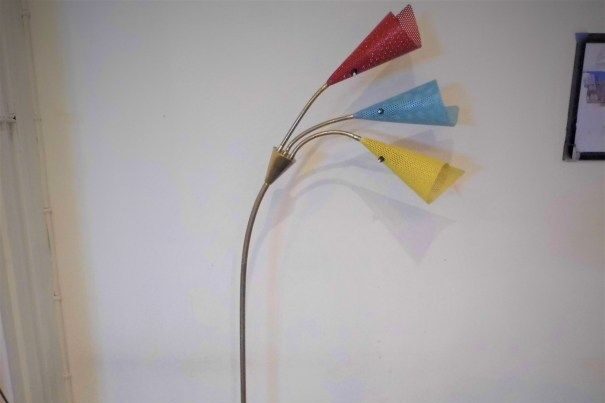
In the corners of living rooms stood futuristic floor lamps with multiple adjustable heads. These lamps gave flexibility, lighting art on the wall or illuminating seating areas. Their design looked modern, with curved metal arms and bright bulbs that often needed replacing. Families used them to brighten up dim corners, and kids tugged on them while reading or playing. The lamps stood tall and noticeable, part decoration, part function. They fit perfectly with the gadget-loving culture of the 1980s, showing how even lighting could make a design statement. They were practical yet stylish, staples in countless living rooms.
21. Big Wall Clocks
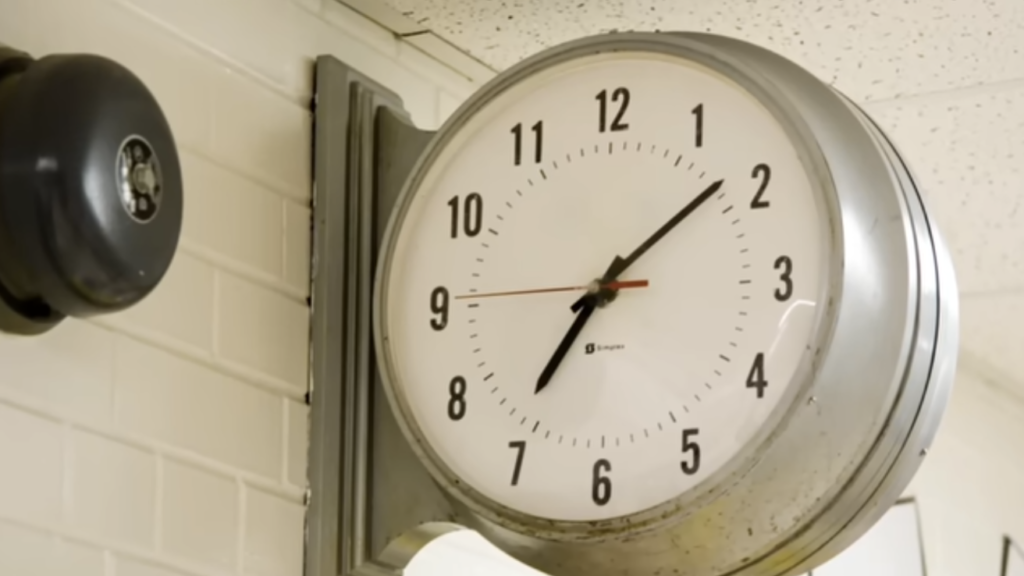
Oversized wall clocks were not just for timekeeping, they were statement pieces. Hanging above sofas or near the entry, they often had brass accents, Roman numerals, or bold minimalist designs. Families checked them constantly, glancing during movie nights or while waiting for dinner. These clocks balanced both function and fashion, filling empty wall space while proving the household paid attention to detail. Sometimes ticking filled the quiet, marking moments with rhythm. Big clocks embodied the era’s love for visible design, blending purpose with style. They remain symbolic of living rooms that valued decoration just as much as utility.
22. Video Tape Storage Racks
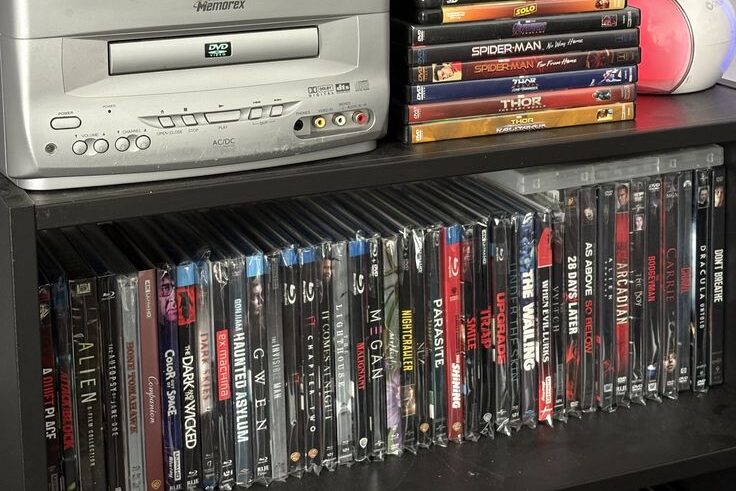
With VHS collections growing by the week, storage became its own requirement. Families purchased racks or cabinets designed just for tapes, turning living rooms into personal video libraries. Rows of recorded shows, movies, and family events filled shelves, sparking debates over which to rewatch. Children proudly displayed animated titles while parents stocked dramas or comedies. These racks were sometimes simple plastic stands, other times elaborate wooden cabinets. Regardless of size, they became part of the living room’s landscape. Tape racks weren’t just storage, they were records of family taste, archiving the decade’s favorite stories in tangible plastic form.
23. Art by Patrick Nagel and Others
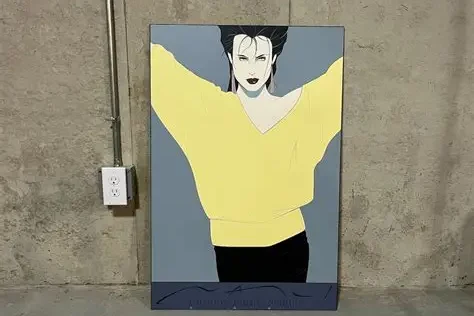
Patrick Nagel’s artwork became one of the most recognizable symbols of the decade, with sharp lines and stylized women painted in bold contrasts. His prints appeared on living room walls, giving homes an instant air of sophistication. Alongside Nagel, families displayed works from artists like LeRoy Neiman or Thomas Kinkade, blending sleek glamour with softer cottage scenes. These pieces showed that art was for everyone, not just gallery visitors. They reflected the diversity of taste in a time when culture mixed fashion, sports, and fantasy. Living rooms carried this art as badges of belonging to the era.
24. Neon Accents and Décor Pieces
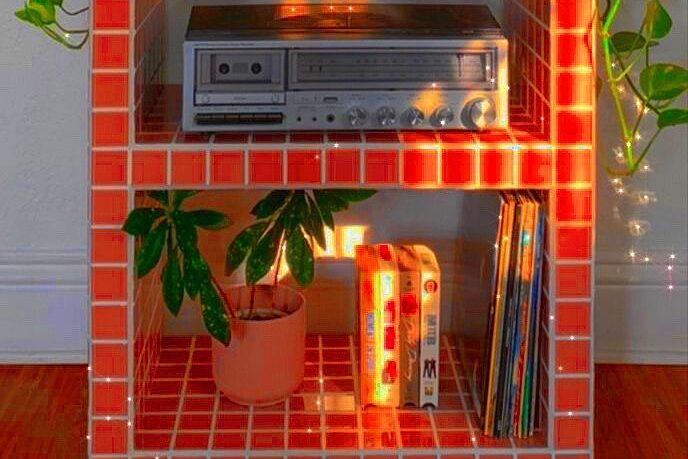
Finally, neon made its way inside, glowing on clocks, sculptures, or wall signs. These accents clashed with floral sofas and brass frames, yet they captured the playful side of the 1980s. In dim light, neon flickered like a slice of nightlife tucked at home. Children stared at the glow while adults saw it as trendy fun. Neon was not subtle, but it didn’t try to be. It was color, brightness, and energy condensed into décor. Neon pieces were small touches with big presence, rounding out the room with the same vibrance that defined the decade as a whole.
The 1980s living room was bold, flashy, and built for entertainment. From VCRs and Nintendo consoles to floral sofas and Nagel art prints, it reflected a decade of consumer culture and excess. Today’s living rooms are sleeker, but few match the personality and excitement of a true ’80s family hangout.
This story 24 Things Almost Always Found in a 1980s Living Room was first published on Daily FETCH


